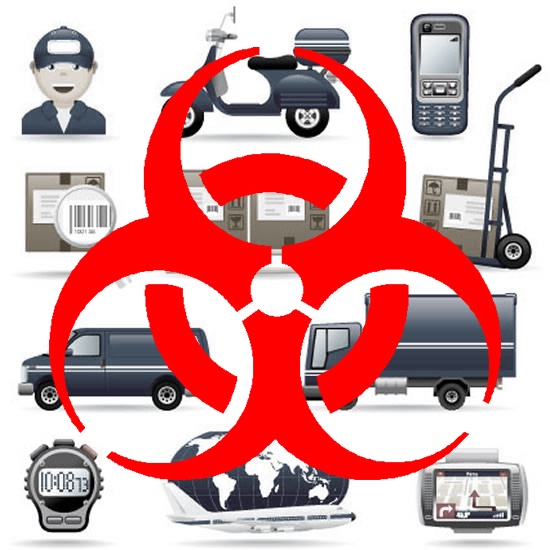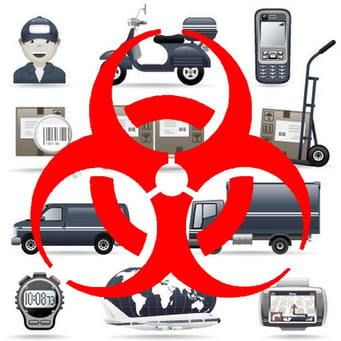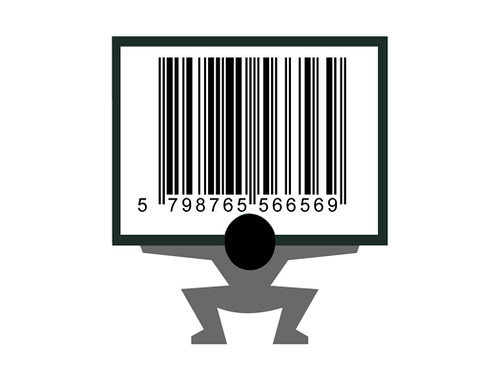What's The Value of Competitive Lean Manufacturing Strategies?
Lean manufacturing strategies have been a goal of most companies over the last few years. Why is Lean so popular? Lean delivers what companies...

If you’re a manufacturer that’s looking to cut some of the fat that might be weighing your business down, you’re not alone. In this article, we will be discussing 7 areas in which resources are commonly wasted, as noted in the Lean Manufacturing operation method. When these waste areas are addressed and corrected, your company could save several $1000s of dollars that were once thrown away. We also focus on how Accumatica Cloud ERP gives visibility to your whole organization affordably and makes tracking wastes easier.

It’s a good idea to try not to transport products unless it’s absolutely necessary because you’re paying for transportation that won’t increase the product’s value, leaving your company with a loss. Excess transport also adds risks of your product getting lost or damaged, and absolutely slows down the manufacturing and the order fullfillment process. Transportation planning can also take excessive man hours if not automated. Acumatica generates shipping orders automatically based on rules and ensures rapid delivery, as well as less manpower.
When it comes to inventory, you want stock to be as low as it can be without leaving your company in a deficit of products. Any materials not being used to generate ROI is a waste, whether it’s raw materials or work in progress. Having materials that are not an active part of making your business money is like renting out an apartment for free, you lose money while it just sits there. The MRP module in Acumatica is a powerful planning tool that enables your organization to satisfy customer requirements while maintaining optimal inventory levels because the art of balancing supply and demand is critical to any manufacturing organization.
Similar to transportation, motion is concerned with unnecessary movement by the product’s assemblers, both machines and human workers. How could this be costing you money? Repetitive and/or unnecessary motions can cause muscle strains in workers and progressed “wear and tear” for machinery. This can lead to medical problems for workers and burn out, costing you an employee or having to buy new machinery in the not so distant future. The goal is to make the process as simple as possible for both man and machine.
No one likes to wait and neither does the manufacturing process, because the longer you wait the more money you lose. Time is always money, that’s why it is important to eliminate as much wait-time as possible. Its because of this that cloud-based technology solutions are gaining popularity with manufacturers, it has been proven to reduce wait time between departments, thus getting the job done faster. Technology is the corner stone of being lean and reducing costs. The speed, volume, and complexity of business transactions almost dictates the use of technology to efficiently support communication and information exchange across departmental boundaries—and the organization’s supply chain. Furthermore, companies can leverage appropriately applied lean-centric technology to eliminate the redundant entry of information from one department to another. In other cases, technology eliminates steps traditionally requiring human intervention and, therefore, reduces wait time.
Too much of a good thing is almost always a bad thing and this applies in the production process as well. Making more product than you need may sound like a good idea, and it is to a very short extent. Unfortunity, if you’re making more product than you’re selling, then your time, money and resources are being wasted. Even if you’re just trying to stay ahead of the game there are other ways to go about it, like keeping a small stash of extra product for emergencies.
Of course you want your product and process to be just right, but don’t overdo it. Over-processing wastes precious time you could be using to actively sale more product. For maximum ROI, the main focus can’t be on how thorough or perfect your process is, it should be on how efficiently your process operates. The process of trial and error will teach you exactly what you need to know and what needs to be fixed as long as you’re tracking tasks and takt time. Acumatica allows for this type of tracking from labor, components to finished goods. The Production Management module gives your organization the ability to control the entire production process and minimize job costs. It captures the total cost of manufacturing including material, labor, overhead, and outside processes.
Defects are a common threat to any company’s production. Not only are they a disappointment, but they will always cause your company to put more time and money in production to either try to fix the defect or start all over again. This can result in it costing double the amount of money for one product. It’s important to try to find the cause of the defects so you can find the solutions to keep then at a minimum. Acumatica provides support to control defects with document control from any device. The document control tracks complaints and non-conformance (CAPA & NCR), inspections and SPC, and audits.
If any of these wastes apply to your manufacturing process, it’s time to trim down. If your legacy business software system:
Then Clients First would be happy to assist you and your team by implementing acclaimed ERP software, either Acumatic or Dynamics AX. An investment in business software can help eliminate waste and in turn make you more profitable. Call us at 800-331-8382 or sales@clientsfirst-tx.com.

Lean manufacturing strategies have been a goal of most companies over the last few years. Why is Lean so popular? Lean delivers what companies...

Cloud Manufacturing Software – How to Apply Lean Manufacturing for Development, Engineering, Manufacturing and Aftermarket Stages Successful...

Anyone working in the manufacturing industry knows that the overall goal is to achieve lean manufacturing. This is typically accomplished with ...